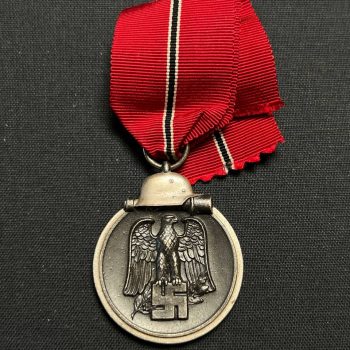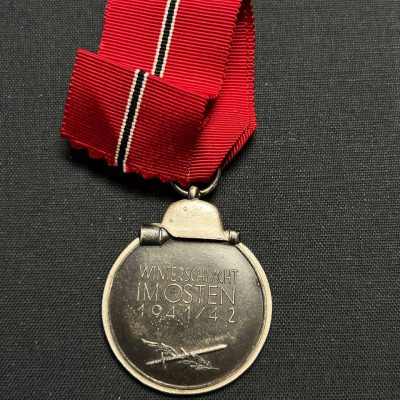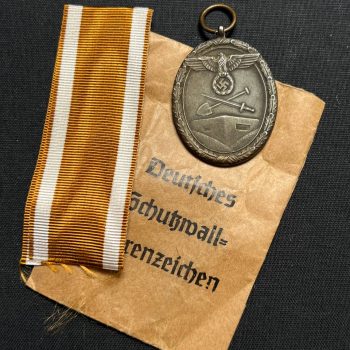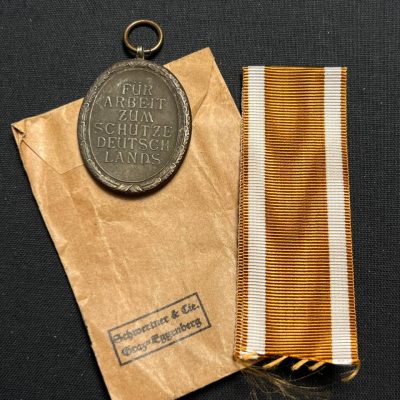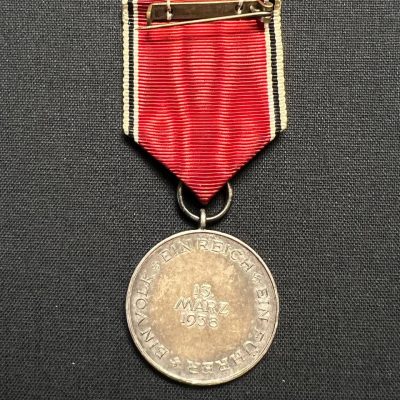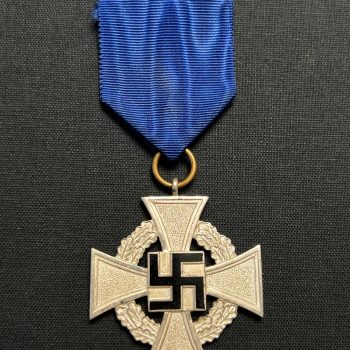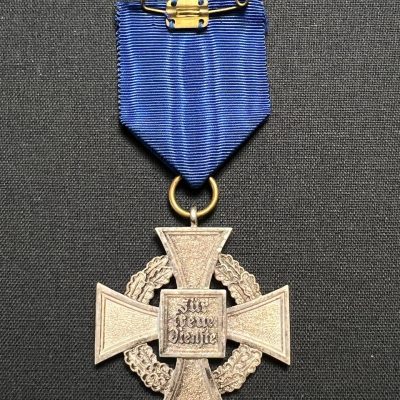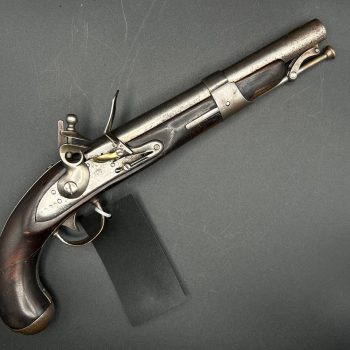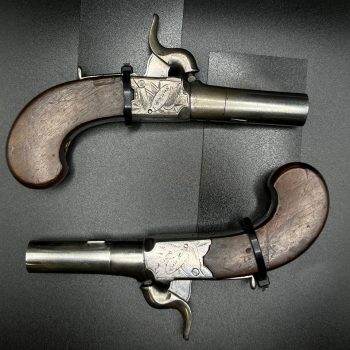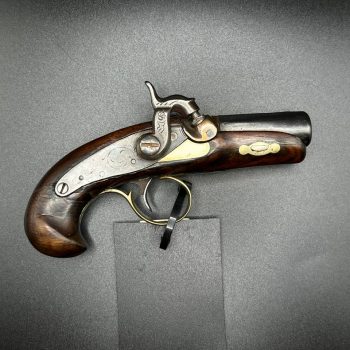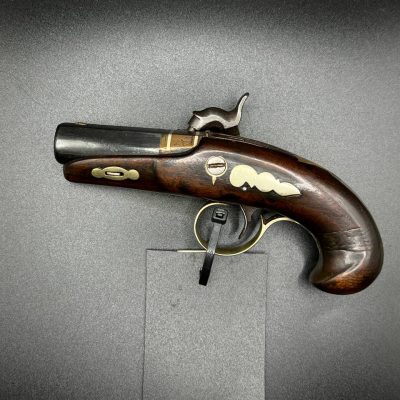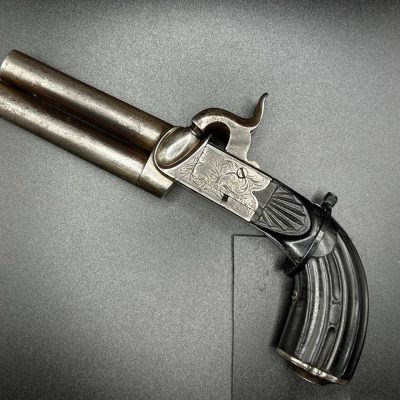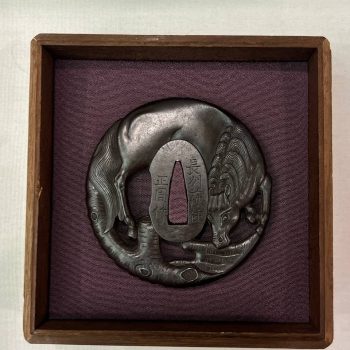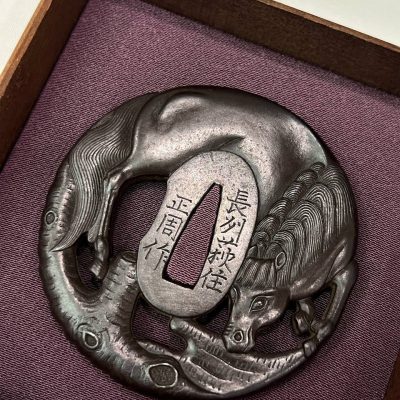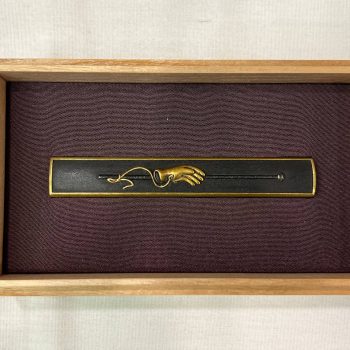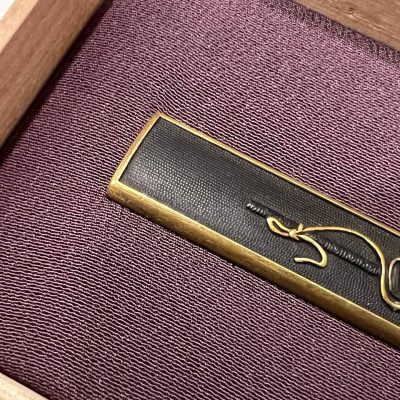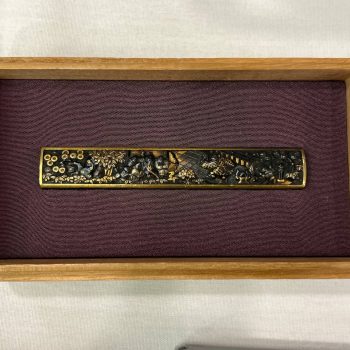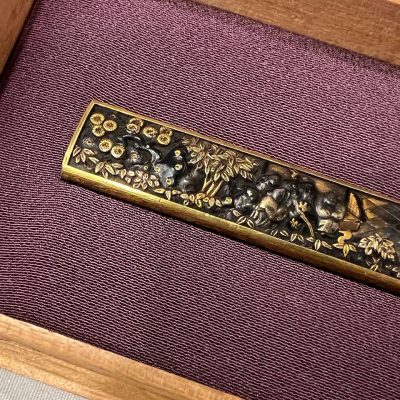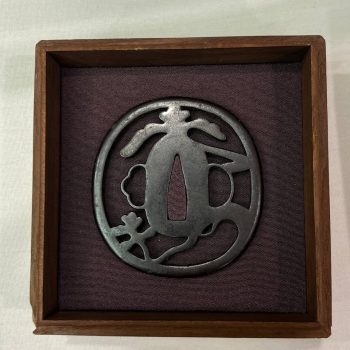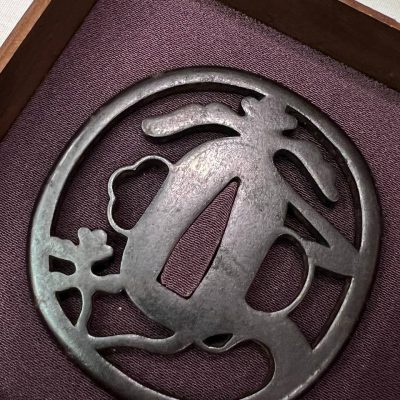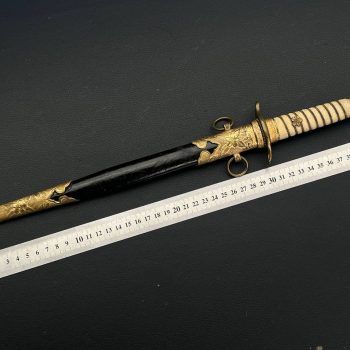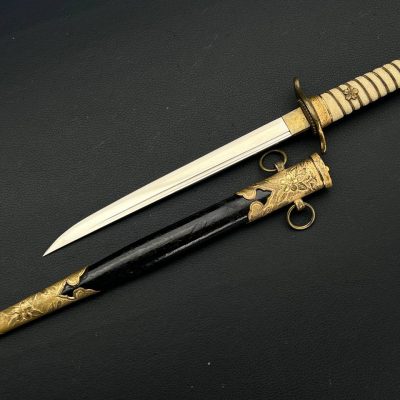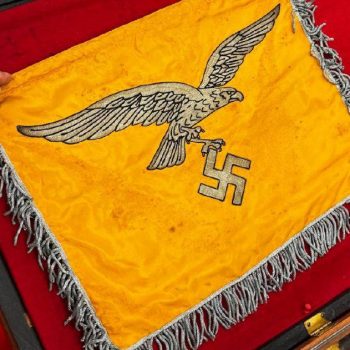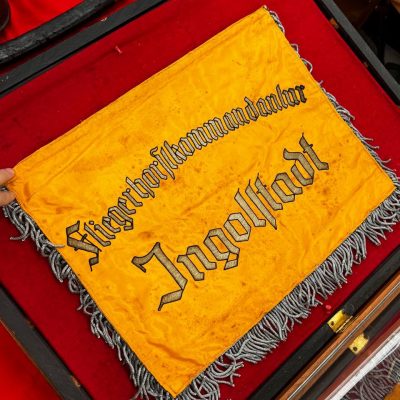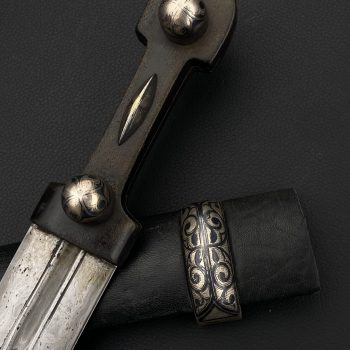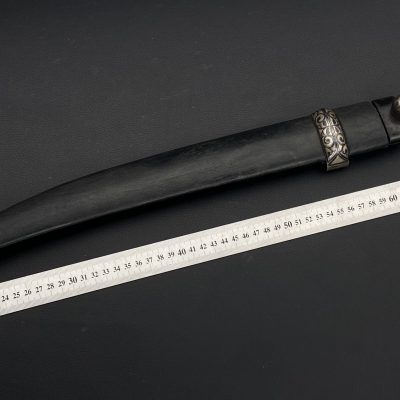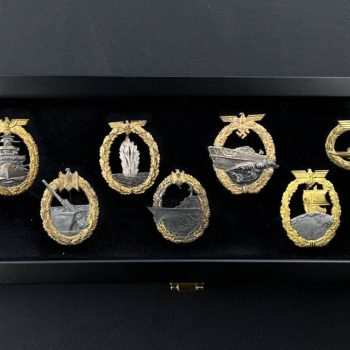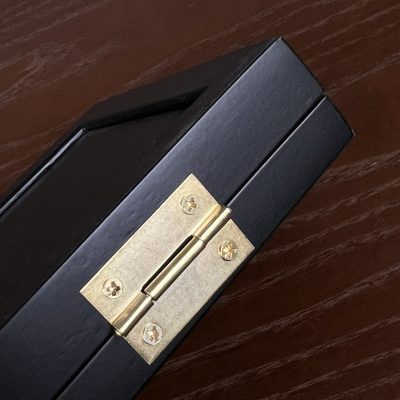Showing all 12 results
Filters-
Eastern Front Medal 1941/42 (Ostmedaille), marked “88”. (Lot: 490)
Starting bid: $ 120Original piece with classic obverse design, “Winterschlacht im Osten 1941/42” reverse inscription, and maker mark “88” on the ring. Good condition with original ribbon.
-
German WestWall Medal with original packet and ribbon. (Lot: 491)
Starting bid: $ 120Oval medal with dark-silver finish and sharp relief; reverse marked “Für Arbeit zum Schutze Deutschlands”. Includes original ribbon and maker-marked paper packet (Schworzin & Cie, Graz-Eggenberg). Good collectible condition.
-
“Anschluss Medal”, 13 March 1938. (Lot: 489)
Starting bid: $ 100Original medal with red-white ribbon, classic obverse design and dated reverse. Good condition with light patina.
-
25-Year Long Service Cross (Third Reich). (Lot: 488)
Starting bid: $ 55Silvered cross with oak-leaf wreath, black enamel emblem, reverse marked “Für treue Dienste”. Original blue ribbon, good condition.
-
Scarce Model 1826 Naval U.S. Martial Flintlock Single Shot By W.L. Evans Valley Forge Pennsylvania (Lot: 493)
Starting bid: $ 3,970A Scarce Model 1826 Naval U.S. Martial Flintlock Single Shot By W.L. Evans Valley Forge Pennsylvania Dated 1830.
8 and 1/8th inch round barrel. .54 caliber. Identical to the 1826 Naval flintlock pistols by Simeon North. The barrel struck at the breech with “US”, “P”, and “LS”. Captive ramrod. The lock stamped “W.L. EVANS” and “US” dated at tail 1830. The lock expertly reconverted to flintlock as is common with this scarce model.
Walnut stock with original short steel belt hook. Steel furniture of standard pattern. Barrel condition is good with very light pitting. Lock with light pitting and wear to stampings. Walnut stock with wear throughout and no visible cartouche but no splits or cracks. The action functions with both half and full cock. The bore is good.
Altogether an acceptable example of this scarce U.S. naval flintlock pistol with a total production of “1000 or less” according to Flayderman.
-
Pair of English Drop Trigger Percussion Pistols (Lot: 495)
Starting bid: $ 1,295Pair of English Drop Trigger Percussion Pistols Marked H Nock.
Marked with one of England’s premier makers of the period, these guns are likely the fake watches of their day. Both guns are in nice condition with engraved frames and slab butts with vacant silver escutcheons.
Both actions, including push-on safeties, function without problems.
Overall length approximately 5 7/8 inches, with twist off barrels, standard British proofs.
-
Over/Under Single Trigger Ebony Handled Percussion Pocket Pistol (Lot: 492)
Starting bid: $ 850This is a compact percussion pocket pistol featuring an over/under barrel configuration and a single trigger mechanism. The pistol is designed for concealed carry and personal defense, typical of mid-19th century craftsmanship.
The barrels are arranged vertically (over/under), and both are fired via a single trigger, alternating or sequentially depending on the mechanism. The action is percussion cap-fired, common in the pre-cartridge era.
The grip is made of finely shaped ebony wood, offering a sleek and elegant appearance as well as a firm hold. The frame and barrels are typically constructed from steel or brass, sometimes engraved or proof-marked, depending on the maker and origin.
Due to its size and configuration, this type of pistol was popular among gentlemen and travelers for its discreetness and ease of use.
Sold at Blitz price
-
Japanese Naval Officer’s Dagger, Model 1883. (Lot: 62)
Auction EndedAn original Japanese naval officer’s dagger, Model 1883, is offered for sale.
This type of dagger was used by officers of the Imperial Japanese Navy from the late 19th century up to the early stages of World War II.
Specifications:
- Original blade with traditional shape
- Brass guard featuring naval insignia
- Grip wrapped in leather or traditional material (specify if known)
- Metal scabbard with period-correct fittings
- Condition: Good, with natural patina and signs of age
A rare and valuable piece for collectors of edged weapons and Japanese military history.
Product sold for blitz price: $ 1,450 -
German WWll Luftwaffe Trumpet Banner (Lot: 49)
Auction EndedThe front side features the Luftwaffe eagle, while the reverse side bears the inscription:
“Fliegerhorst Kommandantur Ingolstadt” (Airfield Headquarters Ingolstadt).
Fliegerhorst Ingolstadt-Manching Airfield
Construction of the airfield began in 1936 with the creation of taxiways, and from spring 1937 onward, various buildings were erected. In April 1938, the completed airfield was handed over to the military and officially named “Fliegerhorst Ingolstadt”.
During World War II, the base hosted various flight schools, including fighter and night-fighter schools, which operated Messerschmitt Bf 110 aircraft.
The Bf 110 was actively used during the French campaign, in the Battle of Britain (where it proved vulnerable against RAF fighters), and later as a night interceptor defending the Reich.
Its primary equipment included radar systems and heavy armament for engaging enemy bombers.
From mid-1944, the airfield was heavily bombed by Allied forces, with particularly intense raids in April 1945.
On April 26, 1945, the airfield was captured by the United States Army.
Product sold for blitz price: $ 4,250 -
Display case 6×14″ (Lot: 40)
Auction EndedOriginal Warstory display case. Features museum-quality, non-reflective glass with UV protection. Material: alder wood.
Product sold for blitz price: $ 110
